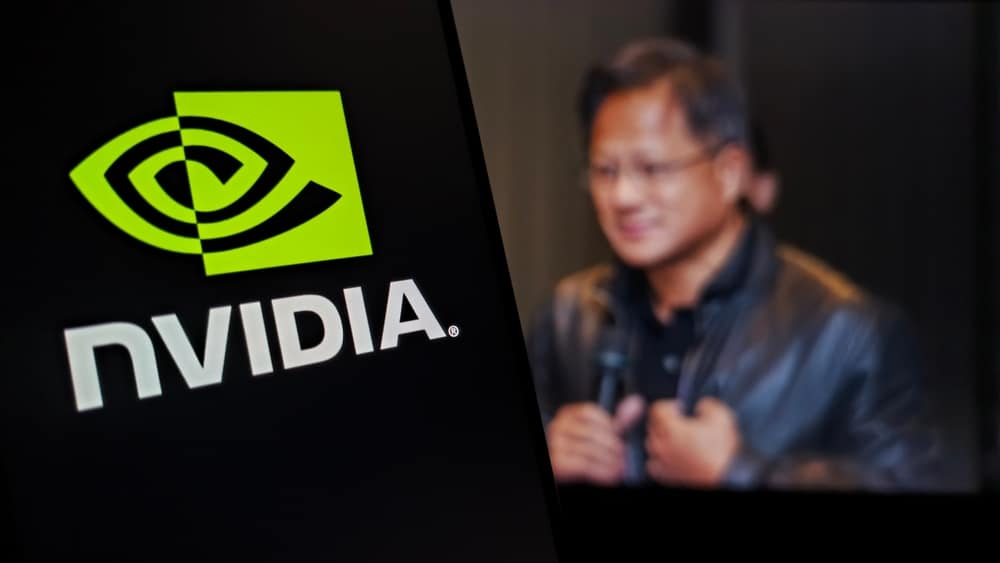
This Part 1 (with a summary and comments by Joanne Z. Tan) is the first 10-minute segment of a 3-part recording of Jensen Huang’s 30-minute talk in Stanford.
To watch Part One as a 12-minute video
To listen to Part One as a 12-minute podcast
Jensen Huang is the co-founder & CEO of Nvidia. As of today, Nvidia has a four trillion dollar valuation. It is the most valuable company in the world and in human history. Jensen shared insights for 30 minutes with a Stanford audience at the Asian American Pioneer Medal Symposium on July 26, 2025.
Joanne Z. Tan, brand strategist, thought leadership coach at 10 Plus Brand, Inc. was in the audience and recorded Jensen Huang’s entire talk, which is broken down into three parts, with summaries as well as comments. (Joanne Tan did NOT use any AI to summarize or comment).
By inventing the technology AND the market at the same time, Jensen aimed to expand, augment, and accelerate general purpose computing CPUs with specialized algorithms for the video game niche. Jensen Huang had the foresight three decades ago to create CUDA, a compatible accelerated computing architecture that became the pillars for AI advancement today. The visualized hardware platform invented in 1994 demanded that Nvidia grow other parts of the “flywheel”: developer ecosystem, install base, and the subsequent demand for GPUs invented by Nvidia.
At that time, to answer the question: “If we build it, will they come?” Jensen said: “If we don’t build it, they can’t come.”
“You have to believe in what you believe, and you have to pursue that belief.” “This is at the core of our company.”
(Jensen Huang’s remaining 20-minute talk, with Joanne Z. Tan’s summary and comments, continues in Parts 2 and 3.)
©Joanne Z. Tan all rights reserved.
================================
(Part 1 of 3:)
(The interviewer, Xuedong Huang, is currently the Chief Technology Officer of Zoom.)
(Jensen Huang:) So first of all, I want to apologize for dressing like this. And everybody else is dressed in tuxedos. Nobody sent me the memo. This is how I dress on weekends. And I was taking a nap, right before this. I don’t get a proper sleep anymore, so I sleep on weekends.
(Xuedong Huang:) That’s awesome.
(Jensen Huang:) You. I’m talking in my sleep. You know what happen…
(Xuedong Huang:) So, I’m supposed to introduce you, and, Well, I don’t think Jensen needs any introduction.
(Jensen Huang:) I still want to hear.
(Xuedong Huang:) This is an incredible gathering. The Auditorium is exceeding its capacity, so I’ll keep it short. Jensen, the original founder and CEO of Nvidia, I really don’t think he’s just making the chips we all are buying together, I believe he is changing the course of human, humanity and civilization trajectory, because AI is the future we all step into. So for the next 30 minutes, we’re going to get him to share with us what is exciting, what keeps you awake, and what challenges you think we are facing. Please share with us some untold story.
(Jensen Huang:) I just….whatever… on weekends… Was there a question?
(Xuedong Huang:) You told me you was going to share your story, regardless of the problem.
(Jensen Huang:) What what you said was… he… He had some questions, and he wanted me to read the questions in advance. But I have to, prepare… I, Yes, I’m busy. And so I have to prepare for the moment, at the moment, you know. And so, so you got to ask me a question. Is there a question? First of all, everything I said, I said today that’s smart is because I learned from Stanford. Anything that I said that wasn’t smart, That’s because well, I won’t go into that. So where do you want to start? So,
(Xuedong Huang:) Maybe I think about … the first question I would love to ask is, you made a big bet on CUDA, and also almost drove your company to bankrupt. You pushed, pushed. You did overcome the resistance. And there’s skepticism many people had at that time. This turned out to be one of your best success stories. So is there any moment you can reflect, that you want to share with this audience, also, what would be the next CUDA, the best, you think; and your company, we need to have, in the next 10 years?
(Jensen Huang:) I’ want to tell some of the big bets that we made and, and I’ll explain the reasoning that led to the big bet. The first big bet was in 1993. The idea that the general purpose computing all by itself, that applications running on CPU can’t possibly solve many of the interesting problems that we have ahead of us.
And the reason for that is because a general purpose instrument, it is, is an important is important in almost the development of any category – a general purpose car, a general purpose housing, general purpose anything, whatever it is. But over time, if you wanted to, if the category were to expand, it would segment to address niches that that are important. In the case of computing, there were… the general purpose architecture allows it to obviously run anything. But the challenge is for specialized algorithms, it could be, the fluid dynamics, it could new particle systems, it could be, structured data processing, it could be (”reference”), or whatever these, whatever these, It could be signal processing, whatever these extreme computational algorithms, don’t fit nicely into general purpose computer.
And so we, we, we, imagine that there would be a way to create, accelerated systems that could augment the the CPU and solve these interesting problems. The problem, the problem with, with, specialized systems is that the markets are too small. And if the markets are too small, it’s hard to create the flywheel, R&D flywheel to add enough value to the central processing unit, which at the time literally had the world’s investment in. And so that’s the challenge.
How do you find that extreme capability to solve interesting problems on the one hand, but have a market sufficiently large that could create that flywheel?
And so we wanted to invent this new way of doing computation. And the question is, how do you get started?
And we came up with a great idea.
The first great idea of the company was video games. And the reason for that is because video games used 3D graphics which was computationally insanely hard at the time with Silicon Graphics supercomputers doing image generation.
We said what if we were to create a system that allows us to do that in really cost effective way, but find a very large market on the other hand.
And so the problem was, 3D graphics algorithms made small required invention, and creating the video game market for 3D required invention.
And so the problem for our company at the time and you’ll see this repeated over and over again, that we had to invent two things at one time. We had to invent a technology, and we had to invent the market.
notice artificial intelligence, when it came along, I was quite receptive to the idea. You had to invent the technology on the one hand, you have to invent a market.
Scientific computing, using acceleration versus very large number of CPUs, we had to invent a technology, and invent a programing approach, and the whole ecosystem, the market of programing in this way.
And so these two sided problems, we were very good at, 1993, made that observation, that, that in many fields of computation, you have to invent the technology AND invent the market. That first pillar of our company exists to this day.
The second, the second big idea was that, was that if you were a, if you were a computing platform install base, developers are probably the single most important thing. And the observation, of course, is obvious for anybody who’s creating a platform today.
But at the time, the idea that we would make all of our accelerators be architect fully compatible, it was, it’s the first accelerated system. To this day, that’s architecturally compatible, and we call it UDA. we added eventually a letter to it, CUDA, but UDA started in 1994.
So that goes, that concept, the architecture, that abstracted architecture, Nvidia’s, Nvidia’s architecture is abstracted since that, it’s a hardware platform. It’s, you know, bare metal, but it’s virtualized. It’s to this day, it’s an incredible invention. And we still maintain on companies. It’s really important.
And that enabled us to continue to grow the developer…developer ecosystem, create a larger and larger install base. The more your install base, the more developers, the more developers, the more people buy your products. Creating a large installed base.
That flywheel started in 1995. Okay.
And then the next breakthrough was of course, CUDA.
The problem, the problem in CUDA was, it was the first investment that we made where the hardware investment, the silicon investment was… it sat inside this graphics chip.
Remember we invented this thing called a GPU. And this GPU, was designed for programable graphics. We invented programable graphics.
When we put on top of that, the cost of CUDA, the weight of this new feature was greater than the entire cost of everything that was underneath it. And so you can’t double your cost as a company without going out of business. It doesn’t exist.
And so the challenge for us was how many doubled the cost of our platform when there were no applications.
And I, I still remember, I’m dealing with this challenge, and we, we had to make… it was essentially an existential decision.
And, and, and the question was, if we built it, will they come?
And ultimately, what I said was: If we don’t build it, they can’t come.
And, and, you have to believe in what you believe.
And to this day, Nvidia employees, you know, they’ll throw it back at me, if, if there’s a, if there’s an investment or decision or strategy, we have to go, we want to go, want to go pursue, but there’s no evidence you can succeed, zero evidence you can succeed. Somebody will say: “You have to believe what you believe.” You know, and so that, that is at the core of our company.
===================================================
(To be continued in Part 2.)
Please don’t forget to like it, comment, or better, SHARE IT WITH OTHERS!
– To stay in the loop, subscribe to our Newsletter
(About 10 Plus Brand: In addition to the “whole 10 yards” of brand building, digital marketing, and content creation for business and personal brands. To contact us: 1-888-288-4533.)
– Visit our Websites:
Phone: 888-288-4533
– Find us online by clicking or follow these hashtags:
